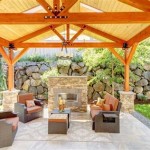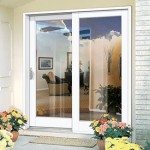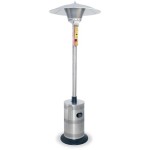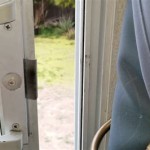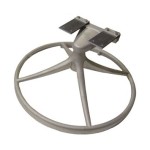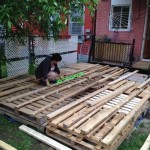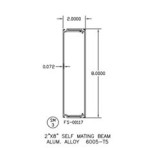Patio Door Covering Options: Enhancing Privacy, Light Control, and Aesthetics
Patio doors serve as significant architectural features, connecting interior spaces with outdoor environments. Their expansive glass surfaces, while offering visual appeal and natural light, can also present challenges regarding privacy, solar heat gain, and light control. Selecting appropriate patio door coverings is crucial for addressing these concerns and optimizing the functionality and aesthetic appeal of the space. The market offers a diverse range of options, each with unique characteristics and benefits. This article explores several popular patio door covering solutions, outlining their features, advantages, and considerations for selection.
Vertical Blinds: A Traditional and Cost-Effective Solution
Vertical blinds represent a common and often budget-friendly choice for covering patio doors. Constructed with vertical slats typically made of vinyl, fabric, or wood, these blinds traverse horizontally across the door opening. They provide adjustable light control through tilting the slats, allowing users to modulate the amount of sunlight entering the room. When fully opened, the slats stack neatly to the side, maximizing the view and natural light. Vertical blinds are particularly suitable for sliding glass doors, offering a practical and efficient solution for managing light and privacy.
One of the key advantages of vertical blinds lies in their ease of operation and maintenance. The tilting mechanism, usually controlled by a wand or cord, allows for precise adjustments to the light levels. Cleaning is relatively simple, requiring only occasional dusting or wiping with a damp cloth. Their durability also contributes to their appeal, as they are often resistant to warping and fading, especially those made from vinyl or treated fabrics.
However, vertical blinds are not without their drawbacks. Some individuals perceive them as less aesthetically pleasing compared to other window treatment options. The slats can sometimes rattle in windy conditions, creating noise. Furthermore, cheaper vinyl options may be prone to cracking or breaking over time, reducing their lifespan. The choice of material and quality of construction are important considerations to ensure longevity and satisfaction.
Sliding Panel Track Blinds: Modern Elegance and Versatility
Sliding panel track blinds present a contemporary alternative to traditional vertical blinds. These coverings consist of wide, flat panels of fabric that slide horizontally along a track. The panels can be customized in various colors, patterns, and textures, offering a greater degree of design flexibility compared to conventional blinds. When opened, the panels stack neatly behind one another, providing a clean and unobstructed view. Sliding panel track blinds are well-suited for large patio doors and can also be used as room dividers.
The primary advantage of sliding panel track blinds is their modern aesthetic. The clean lines and smooth operation contribute to a sophisticated and uncluttered look. The wide selection of fabrics allows for matching or complementing existing interior decor. These blinds can also effectively diffuse light, creating a soft and ambient atmosphere. Moreover, the fabric panels offer a degree of insulation, helping to reduce energy costs by minimizing heat transfer through the glass.
A potential disadvantage of sliding panel track blinds is their limited light control compared to tilting slat blinds. While they can block light when closed, they do not offer the same level of precision in adjusting the light entering the room. The panels can also be more challenging to clean than vinyl blinds, depending on the fabric used. Additionally, the cost of sliding panel track blinds can be higher than that of vertical blinds, particularly for custom-made options.
Cellular Shades: Energy Efficiency and Privacy
Cellular shades, also known as honeycomb shades, are characterized by their unique cellular structure, which creates pockets of air that provide insulation. These shades are available in a variety of fabrics, colors, and cell sizes, offering both light control and energy efficiency. They can be operated in a variety of ways, including corded, cordless, and motorized options. Cellular shades are suitable for various window sizes and styles, including patio doors.
The primary strength of cellular shades is their energy efficiency. The honeycomb structure traps air, creating a barrier that reduces heat transfer in both summer and winter. This can lead to significant energy savings and improved comfort. Cellular shades also offer excellent privacy, completely blocking the view when closed. The variety of fabric options allows for different levels of light filtering, ranging from sheer to blackout.
Compared to blinds, cellular shades are often more susceptible to damage. The fabric can be torn or stained, requiring more careful handling. Cleaning can also be more challenging, often requiring professional cleaning services. Furthermore, cellular shades may not offer the same level of visual appeal as some other window treatment options. While they are available in various colors and textures, the cellular structure can appear somewhat utilitarian. The cost of cellular shades can also be higher than that of basic blinds.
Roman Shades: Timeless Elegance and Sophistication
Roman shades are fabric window coverings that fold up into pleats when raised. They are available in a wide range of fabrics, colors, and patterns, offering a high degree of design flexibility. Roman shades can be customized to fit various window sizes and styles, including patio doors. They provide a soft and elegant look, enhancing the aesthetic appeal of the space.
The main benefit of Roman shades is their aesthetic appeal. The fabric folds create a visually interesting texture, adding depth and dimension to the room. The wide variety of fabric options allows for coordinating with existing decor and creating a personalized look. Roman shades can also provide effective light control, depending on the fabric used. Thicker fabrics can block more light, while lighter fabrics can diffuse light, creating a soft and ambient atmosphere.
However, Roman shades can be more difficult to operate and maintain compared to some other window treatment options. The folding mechanism can be complex, requiring more effort to raise and lower the shades. Cleaning can also be more challenging, often requiring professional cleaning services. Furthermore, Roman shades may not offer the same level of insulation as cellular shades. They can also be more expensive than basic blinds or shades, particularly for custom-made options. The weight of the fabric can also be a factor, requiring a sturdier mounting system for larger patio doors.
Drapes and Curtains: Classic Versatility and Fabric Options
Drapes and curtains represent a classic and versatile option for covering patio doors. They consist of large panels of fabric that hang from a rod or track. Drapes are typically made of heavier fabrics and are often lined, providing greater privacy and insulation. Curtains are generally made of lighter fabrics and offer more light filtration. Both drapes and curtains are available in a vast array of colors, patterns, and textures, offering endless design possibilities.
The key advantage of drapes and curtains is their versatility. They can be used to create a wide range of looks, from formal and elegant to casual and relaxed. The vast selection of fabrics allows for matching or complementing existing decor and creating a personalized style. Drapes can also provide excellent privacy and insulation, helping to reduce energy costs and improve comfort. Curtains can also soften the light entering the room, creating a warm and inviting atmosphere.
A potential drawback of drapes and curtains is their maintenance requirements. They require regular washing or dry cleaning to maintain their appearance. The weight of the fabric can also be a factor, requiring a sturdy rod or track. Furthermore, drapes and curtains can take up a significant amount of space, especially when fully opened. They may not be the best option for small rooms or spaces where maximizing the view is a priority. The cost of drapes and curtains can also vary widely, depending on the fabric and lining used.
Plantation Shutters: Investment in Durability and Style
Plantation shutters are a premium window covering option characterized by their solid wood or composite material construction with adjustable louvers. These shutters are mounted directly to the door frame or surrounding wall, providing a custom-fitted and permanent solution. Plantation shutters offer excellent light control, privacy, and aesthetic appeal, making them a valuable addition to any home.
The primary benefit of plantation shutters is their durability and longevity. Constructed from high-quality materials, they are resistant to warping, cracking, and fading. The adjustable louvers allow for precise control over light and privacy, offering a versatile solution for various needs. Plantation shutters also enhance the architectural appeal of the space, adding a touch of elegance and sophistication. They can also increase the property value, making them a worthwhile investment.
However, plantation shutters are one of the most expensive window covering options. The custom fitting and installation process can be complex and time-consuming. Cleaning can also be more involved, requiring regular dusting and occasional polishing. Furthermore, plantation shutters can block a significant amount of light even when the louvers are open, potentially reducing the amount of natural light entering the room. Carefully consider the budget and the desired level of light filtration before opting for plantation shutters.
Motorized Options: Enhancing Convenience and Accessibility
Many of the aforementioned patio door covering options are available with motorized operation. Motorization allows for controlling the blinds, shades, or drapes with the touch of a button, remote control, or even a smartphone app. This feature enhances convenience and accessibility, particularly for large or hard-to-reach patio doors.
The main advantage of motorized patio door coverings is convenience. They eliminate the need for manual operation, making it easier to adjust the light and privacy levels. Motorization is particularly beneficial for individuals with mobility issues or for those who prefer a more automated home environment. Motorized options can also be integrated with smart home systems, allowing for scheduling and remote control. This adds an extra layer of convenience and energy efficiency.
However, motorized patio door coverings are typically more expensive than their manual counterparts. The installation process can also be more complex, requiring electrical wiring. Maintenance costs may also be higher, as the motor and other electronic components may require occasional servicing. Furthermore, motorized options require a power source, which can be a concern in case of power outages. Consider the cost, complexity, and power requirements before opting for motorized patio door coverings.

Patio Door Curtain Ideas For Diffe Needs And Tastes Family Handyman

11 Best Sliding Door Blinds Ideas Coverings Window Treatments

How To Find The Best Patio Door Window Treatments Pella

Patio Door Blinds And Shutters Luxaflex Co

10 Patio Door Curtain Ideas You Ll Love

The Best Window Treatments To Cover A Sliding Glass Door Sunburst Shutters

Patio Door Curtain Ideas For Diffe Needs And Tastes Family Handyman

Window Treatments For Sliding Glass Doors Patio French

Blind Ideas For Patio Doors 247blinds Co

Door Blinds For Sliding Glass Doors French
Related Posts

